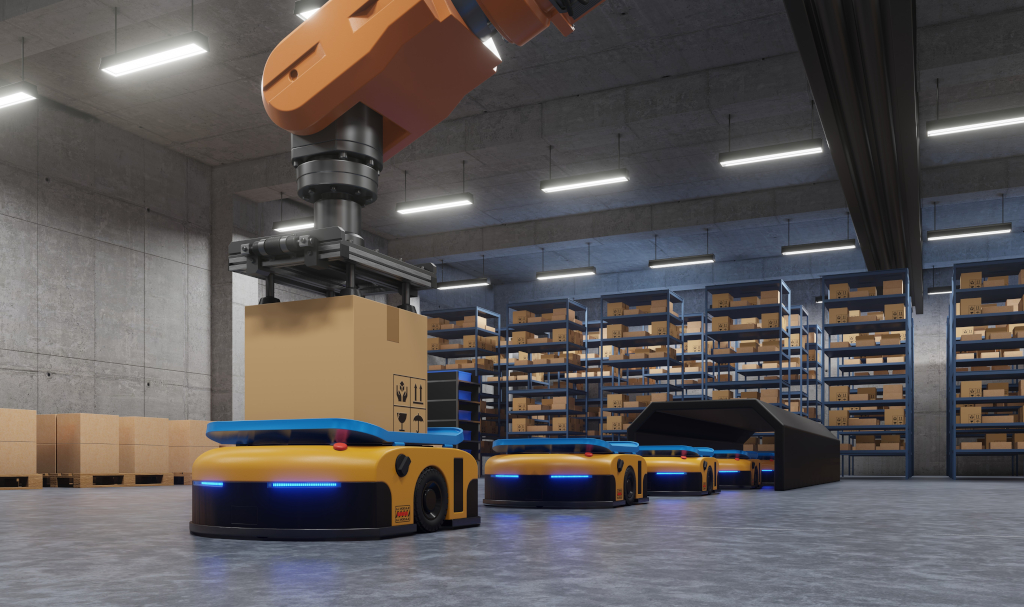[ad_1]
AsianScientist (May 20, 2021) – If you’ve ever owned a robot vacuum cleaner, you might be familiar with how much easier life can be with this technology assistant on the job.
Beyond household use, robots have lessened the workload for businesses as well; an estimate of 373,000 industrial robots were shipped worldwide in 2019, taking over many mundane tasks. They weld, paint, assemble, disassemble, package, label and test, all with exceptional speed and precision.
Zooming in on the logistics industry, where the market size for robotic solutions is expected to reach US$14.95 billion by 2027, robots have cut down the probability of human error while speeding up operations.
However, despite their strength, speed and accuracy, standard robotic solutions may not be adaptable to unplanned changes in the warehouse environment. Humans, on the other hand, can pivot from one task to another if required and solve any complex problem as soon as they arise.
To advance the role of robots in the logistics industry, here are four tech offers that would bring intelligent working robots into our warehouses.
Putting a robot in charge
Singapore is home to some of Southeast Asia’s largest warehouses—clocking in at a few hundred thousand square feet each, many of these spaces are fully automated to streamline processes by relying on robots for tasks like packing, lifting heavy objects and retrieving items.
With the various types of robot models moving about in one environment, there is a need for a robotic management system to properly integrate operations. A Singaporean firm has therefore developed an innovative robot controller, which can optimise functions such as route planning, job allocation and decision making for warehouse robots. Tested with fleets of two to a hundred robots, the controller can outperform existing software by over 40 per cent.
With the ability to adapt to dynamic changes like breakdowns, the robot controller can integrate into traditional robotic fleet management software for seamless introduction into any logistic company’s processes. Designed to handle constant activity in a fluctuating environment, the system is suitable for 24-hour operations in e-commerce fulfillment facilities and manufacturing plants.
Flying through inventory
Drones have played a significant role in automating the logistics industry in recent years. With an annual growth rate of almost 20 per cent, the market for industrial drones is expected to reach US$29 billion by 2027, and for good reason: not only are drone solutions more efficient, they can provide companies with valuable operational data instantaneously.
Developed for stock taking, inventory management, surveillance and inspection, this autonomous drone solution developed in Singapore is an easy plug-and-play solution that takes just 30 minutes to set up. Under traditional inventory management methods, workers can take two to eight hours to cover a single warehouse rack. With the drone, similar stocktaking can be completed in 15 minutes, freeing up staff to perform value-added activities like analyzing data collected to improve operations.
Coming to a workplace near you
With the rapid rise of artificial intelligence in recent years, cooperation between humans and intelligent machines is expected to generate at least US$2.9 trillion in business by the end of 2021. Moving out of the warehouse and into supermarkets, office buildings and homes, intelligent robots are set to become a part of our everyday lives.
To ensure they can be widely implemented, however, these robotic solutions need to be easily operable and relatively affordable. Currently, two technologies developed in Singapore aim to accomplish just that with a mobile robotic assistant for day-to-day tasks and an inexpensive autonomous transporter for SMEs.
Mobile robotic assistants such as guiding robots typically rely on cameras and other vision-related technologies for navigation. While already commercialised, these technologies are limited in that they often require a constant line of sight with the subject, which could cause problems in crowded indoor areas.
Now, a Singaporean academic institute has come up with an AI-enabled mobile robotic assistant that can track its user’s location even without direct line of sight. Able to operate for three to four hours at a time with loads of up to 50kg, the device can be used as a smart shopping cart, a robotic tour guide or an intelligent load-carrying platform in warehouses.
Especially for SMEs, another academic institute in Singapore has also developed a transporter robot targeted at the manufacturing sector. As robotics and automation become more prevalent in industry operations, companies that cannot afford to make the switch are in danger of being left behind.
Modular, easily configurable and affordable, adopting the transporter is a first step towards enabling smaller firms to venture into more advanced robotics solutions. Designed to easily accommodate additional equipment like sensors, cameras and GPS, it is a versatile platform for various applications, including hazardous workplace environments.
Asian Scientist Magazine is a media partner of IPI.
———
Copyright: IPI. Read the original article here.
Disclaimer: This article does not necessarily reflect the views of AsianScientist or its staff.
[ad_2]
Source link